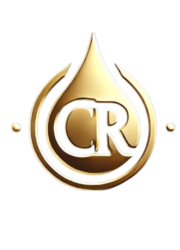
Hydration for Pilots & Cabin Crew in Gulf Airlines
Share
Long-haul duty, dry cabin air, irregular meals, and back-to-back sectors quietly drain fluids and minerals. This guide gives Gulf pilots and cabin crew a simple, sugar-free hydration protocol to reduce fatigue, maintain focus, and manage jet lag without energy crashes.
Why pilots & cabin crew dehydrate faster in flight
- Low cabin humidity (often <20%) increases fluid loss with every breath.
- Long duty periods and irregular service windows mean fewer chances to drink.
- Caffeine/diuretics without minerals can unbalance hydration.
- Circadian stress (night sectors) makes under-hydration feel like extreme fatigue.
Pre-flight: 90-minute prep (clean, sugar-free electrolytes)
- T-90 min: 300–500 ml water + 1 electrolyte stick.
- Meal: Add a pinch of salt; include potassium foods (avocado, leafy greens) if available.
- Pack: 2–4 spare sticks in a clear pouch for security.
Questions about carrying powders? See our plane travel guide: Can you bring electrolytes on a plane?
In-flight: simple schedule for duty blocks
Sip don’t chug. Aim ~150–250 ml every 20–30 minutes when service allows. Add electrolytes strategically:
- First hour after takeoff: 1 stick in 300–500 ml.
- Mid-sector: water sips; if cabin is very dry or you’re on your feet for long periods, add another half to one stick.
- Last hour before landing: 1 stick if you have a tight turnaround or a night landing.
How many sachets per duty?
| Duty / Flight time | Suggested sachets | Notes |
|---|---|---|
| Short haul (<3 h) | 1 stick | Use early after takeoff; sip water the rest of the time. |
| Medium haul (3–6 h) | 1–2 sticks | Take a second mid-sector if standing a lot or cabin feels very dry. |
| Long haul (>6 h) | 2–3 sticks | Distribute across first hour, mid-sector, and pre-landing. |
| Back-to-back sectors | +1 extra | Use during turnaround or before the next boarding. |
Personalize your intake with the Hydration Calculator.
Coffee, jet lag & minerals: finding balance
- Caffeine is fine pair with water and minerals to avoid jitters and crashes.
- Sodium supports fluid retention; potassium and magnesium support nerve and muscle function.
- Night sectors: avoid liters of plain water without minerals (bathroom trips + poor hydration quality).
Post-flight: quick recovery protocol
- On arrival: 300–500 ml water + 1 stick.
- Light meal with protein and moderate salt.
- If it’s late: taper fluids 60–90 minutes before sleep to minimize awakenings.
Cabin-ready packing checklist
- 4–6 sticks in a clear zip pouch (easy for security).
- Collapsible bottle (mix after security).
- Wipes and a small trash bag for a tidy galley.
Why sugar-free electrolytes make sense for aviation
Sugar doesn’t hydrate minerals do. Clean formulas help avoid spikes and crashes, especially on night duty or back-to-back sectors. For a deeper overview, see the hub: Sugar-Free Electrolyte Supplement UAE.
Credibility & Certifications
Electrag Gold is Montaji-certified and recognized as a Gold Local Content Partner by Etihad Aviation Group (Alwatani Program). This partnership reinforces our commitment to trusted hydration solutions for aviation professionals in the Gulf.
Related reading
- Can you bring electrolytes on a plane?
- Hydration Calculator
- Sugar-Free Electrolyte Supplement UAE (hub)
FAQ
How many electrolyte sachets should I carry for a long-haul?
Most crew do well with 2–3 sticks for >6 h duty, spaced across takeoff, mid-sector, and pre-landing. Adjust with the Hydration Calculator.
Will electrolytes keep me awake?
Electrolyte minerals are not stimulants like caffeine. If you’re sensitive to late fluids, taper the last 60–90 minutes before sleep.
Are powder sachets allowed through airport security?
They are typically accepted when sealed. Present them separately if requested and mix after security. Always check your airline and airport rules.
Disclaimer: Informational only. Follow your airline/airport policies and your aeromedical guidance.
